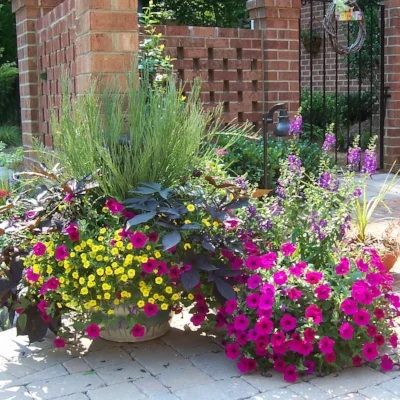5 Tips for a Greener Summer Lawn
Wish your lawn was greener but have heard horror stories about what can happen when you fertilize too much in the summer? Here are five safe-for-your-lawn options that will have you seeing green-including how to safely apply fertilizer. Let's start with the easiest/cheapest and work our way up:
1. Raise your mower height. For fescues (a cool-season turfgrass), the longer you leave your lawn when you cut, the healthier and greener it will be. A good height for fescue is 3 1/2” - 4”. To adjust your mower height, (with the mower shut off, of course!) measure from a hard flat surface like the driveway or walk to the bottom of the mower blade and adjust the height accordingly. Warm-season grasses like Bermudagrass and Zoysia are much more tolerant of summer temperatures and can be mowed shorter, generally 1 1/2” - 2” for Zoysia and 2” - 2 1/2” for Bermudagrass. Just don’t scalp your warm-season grasses by mowing too short - this will cause dead-looking brown patches.
2. Keep mower blades sharp. Dull mower blades will tear and shred the grass instead of making a clean cut. The shredded, damaged areas will turn tan and brown as the damaged areas die. This expanse of dead tips will make your lawn look unhealthy and off-color.
Espoma Summer Revitalizer has chelated iron and a bit of organic fertilizer, perfect to green up your lawn in summer.
3. Apply iron. Iron is a component of chlorophyll synthesis and will give you a short-term green up without the risk of overfeeding. It is available in liquid and granular form. Look for chelated iron as it is used more readily by the grass. Always apply according to package directions for maximum effectiveness and safety. Whether you choose a liquid or granular form of iron, keep it off of walkways or patios- it can stain.
4. Apply lime. If soil tests (available free from the NC Dept. of Agriculture) reveal low pH, there may be nutrients in the soil that your grass can’t use. Applying a chelated lime product like SoluCal or Turf Turbo will raise pH faster than plain pelletized lime, making those nutrients available and greening up grass. (Pelletized lime is good for fall or spring maintenance applications, but it doesn't work as quickly as chelated lime if you're looking for a quick result). A soil test first is important: excess lime/high pH can also reduce the availability of soil nutrients. The ideal lawn pH is about 6.0 to 7.0.
5. Apply organic fertilizer sparingly. This is generally the last option you should try, as you need to get it right. The key is to apply just a little bit to improve color without stimulating a growth flush or causing disease problems. Use no more than 0.25 lb. per 1000 square feet in summer. Applying nitrogen in summer can lead to burning of the grass. Using an organic fertilizer eliminates the risk of burning when used at the proper rates. Be sure to calculate the amount needed carefully using this formula:
Lb. N desired per 1000 sq. ft. divided by % N shown on bag (as a decimal)
So if applying a 10-10-10 fertilizer at a rate of 0.25 lbs N/1000 sq. ft., you would use 0.25/0.10=2.5 lbs/1000 sq. ft. Be sure your spreader is calibrated and apply as accurately as possible.





















